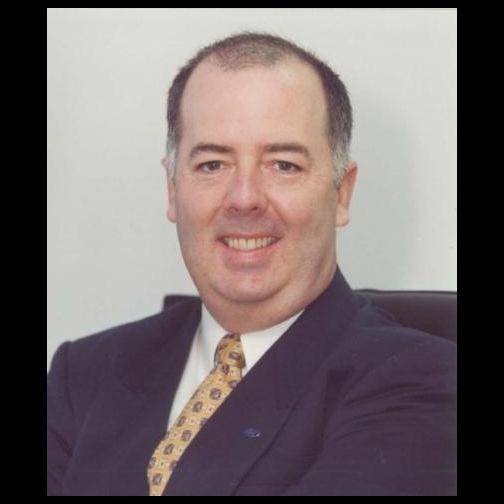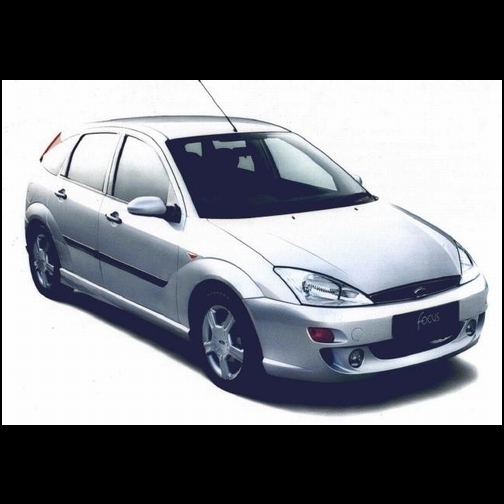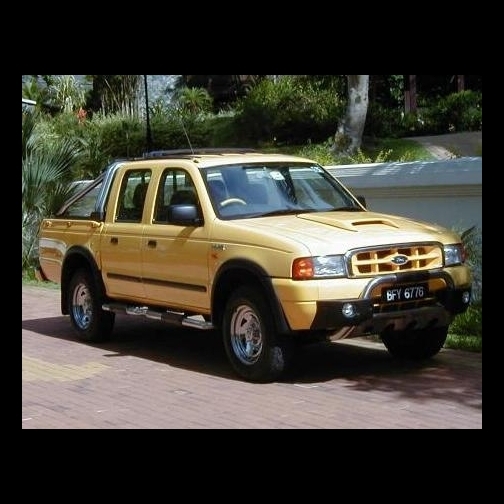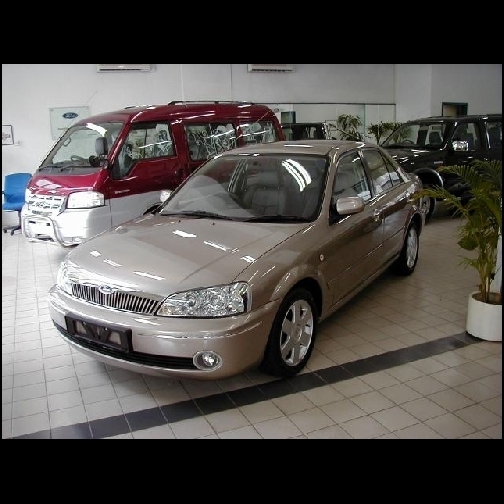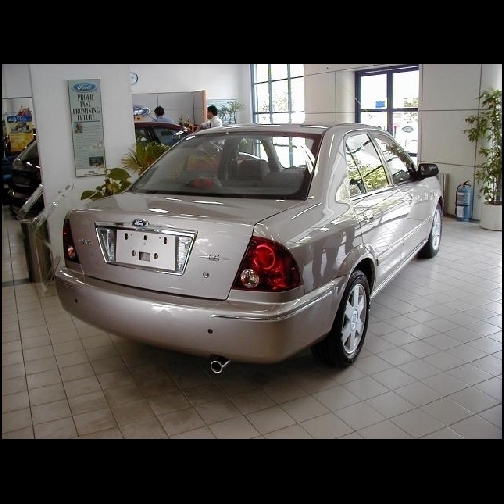In 1996, it would have been inconceivable that Ford could beat Honda in total sales in Malaysia and double its share of the non-national segment. Yet, last year, that happened and it was clear evidence of how Ford’s marketing strategies and even its image have changed significantly in just four years. The man responsible for that impressive achievement was Richard L. Canny who was Managing Director of Ford Malaysia (formerly known as AMIM Holdings. He was assigned to Malaysia to help Ford regain its market share and be on a solid footing in preparation for AFTA.
In all the time he was here, Mr Canny remained very accessible to the press and was keen to listen to our views, paying particular attention to the negative ones and addressing them. He also made it a point to personally participate in the forums of some websites, AW included, to get feedback directly from owners and understand what problems they faced. He was the only MD of a car company here willing to reach out to customers in such a manner.
Though very busy preparing for his new assignment as President of Ford Argentina, Mr Canny very kindly set aside some time to be interviewed by AW’s Chips Yap. The following are excerpts from the interview:
What were the challenges you faced on arrival in Malaysia and which needed ‘fixing’?
When I came to Malaysia in March 1997, there were a number of areas I had to quickly review and improve upon. Naturally, one of the first things I did was to find out why our market share had declined during the early 1990s.
It was clear that the products were fairly dated and although the pricing then was okay, there seemed to be inconsistencies. So overhauling and refreshing the range was important but that needed a while to achieve. In the meantime, we needed to get more promotions and increase advertising to improve Ford’s image.
The retail network was not in a good condition then and that needed addressing, along with getting better standards of customer care and after-sales services.
Why had Ford’s market share declined?
The issues I mentioned were the main reasons for the decline in market share but it was also important to understand why they were allowed to occur. It’s fair to say that Malaysia did not get a lot of attention from Ford then and it’s partly because there was the National Car program, so the market and volumes for Ford were not really big. There was also the equity Ford held in the joint-venture then, which was fairly small.
The business model for Malaysia today differs from 5 years ago. Can you explain why there was this change?
The distributor-dealer model has been a typical model for smaller markets but each market has its own unique characteristics and not all may be best served by Ford’s traditional business model of having a distributor-dealer arrangement.
If you look at Malaysia and the long-term opportunities and the need to actively manage the product planning side of the business – what products are built, the way they’re marketed, the assembly side and that it is done efficiently – then it is much more appropriate for Ford to have a more active role. So we decided that we should become more involved in managing the product, the brand, the retail network, the manufacturing side… in other words, a more ‘hands-on’ approach. Of course, we also have a joint-venture partner – Sime Darby – who participates with us as well. [Last year, Ford raised its equity to 49% in the joint-venture company called ‘AMIM Holdings’ Sdn Bhd, and it was renamed ‘Ford Malaysia Sdn Bhd’]
Anywhere that we have local assembly makes our product planning decisions and technical support from Ford more intense; obviously Malaysia is such a case. As we move towards regionalisation of the business under AFTA, the complementation among the countries requires a more active Ford presence which would not be possible with the distributor-dealer set-up.
Of course, as I said earlier, it also depends on the country’s potential; the greater that potential and opportunities in the long-term, the more inclined Ford would be to increase its active role and presence. So for Malaysia, as we were wanting to put in more effort, we also wanted a share of the rewards of that greater effort and we therefore felt that increasing our equity to 49% was the way to do that.
I also explained before how, when Ford did not have a significant equity in the joint-venture, it was not ‘noticed’ back in Detroit [where Ford’s World headquarters is located]. But now that we have 49%, it appears in annual regional reviews more prominently and that means that attention will be given to the operations here and out of this interest will come more technology transfer, faster model introductions and access to more resources in the Ford world.
What about the change of name from ‘AMIM Holdings’ to ‘Ford Malaysia’?
The name change reflects the increase of Ford Motor Company’s shareholding – from 30% to 49% – in its joint-venture. We regard this country as an important market for Ford and re-establishing our corporate presence here for the Malaysian consumers will assist us in building our brand and preparing for the implementation of AFTA. You could also say that the name change reflects Ford’s confidence in the excellent prospects of the Malaysian economy as well as the growth potential of the automobile industry in Malaysia.
How dominant is Ford’s management in the Malaysian operation?
It should be clear that the operation here is a joint-venture and we have a board of directors with representatives appointed from Ford and Sime Darby. We operate on a consensus basis with our partner and major decisions need to be discussed by the board and both parties have to be agreeable. Operationally, on a day-to-day basis, it comes down to the actual people involved and at the moment, there are four people from Ford – out of roughly a thousand employees in Ford Malaysia – so it is a very small percentage of employees that are placed in Malaysia by Ford. Of course, we do get a lot of personnel coming and going too but it’s just four people actually sitting here on a full-time basis. These people have the roles of Managing Director,Business Development/Finance, Manufacturing and Human Resources. Additionally, Ford also has some support people within the manufacturing and HR areas.
I don’t think that the number of people assigned to Malaysia by Ford will change significantly over time and it is in fact our vision that the business here in Malaysia should be staffed by Malaysians. That’s why we are exposing our Malaysian staff to Ford’s operations elsewhere so they gain the experience. Steven Tan, who was Ford Malaysia’s Marketing Manager, is now Communications Manager for the ASEAN market and based in Bangkok while Pauline Kee, another Malaysian who joined us not so long ago, is Communications Manager for other markets in the Asia-Pacific region. It’s unfortunate that Ford had not been as technically and actively involved in Malaysia for a long time so the fresh knowledge of Ford’s processes has been lacking but we’re addressing that now.
How useful is having experience in the ‘Ford world’ by working in other Ford units?
I think it is important that we have people who have experience working in Ford so that they have better access to the Ford network. That’s why we want to develop our Malaysian staff and give them the broader overseas experience so they understand how the company does business in other markets.
Would product pricing be better since Ford is actively involved?
There is still the negotiation of prices with the factory and as this is a joint-venture, it is the responsibility of the MD to make sure that the joint-venture achieves a satisfactory return on investment. Obviously to do that, we need to bring models to the market at the right price and have a cost level with an acceptable margin. Of course, there may be times when we make a request for changes in pricing but we try our best to be competitive and make a decent profit and at the same time satisfy customers.
What about including CBU (imported models) products in the line-up
It’s important to have an image product in the line-up and I think the Focus has been doing a great job. I feel that apart from, say, five or six locally assembled models, it would be good to also be able to offer two or three others CBU products. Although Malaysia’s import taxes are among the highest in the world – 140% to 300% – there are some opportunities for us to sell CBUs in specialised segments. However, government policies at this time don’t allow us to adopt such a strategy in a significant way.
What’s the status of the plan to use Malaysia as the ASEAN base for the Escape
We announced that intention last year but with Malaysia’s delay in opening its auto sector under AFTA till 2005, Malaysian-assembled vehicles will not be accepted in other ASEAN markets at the preferential tariffs of 0 – 5%. It wouldn’t be fair to our distributors in the other markets if they have to wait till 2005 and they don’t want to. So we are looking at an alternative site elsewhere in the region [to allow us to enjoy the benefits of AFTA from 2003].
It’s a pity, really, because we would certainly have assembled much higher volumes of the Escape and this would have meant more business for Malaysian suppliers. And Ford would have made a bigger investments and perhaps added another model or two.
In your view, what’s the quality of Ford vehicles assembled in Malaysia?
The quality of vehicles we assemble here have to meet Ford’s global standards and what Malaysian customers get are, I believe, very good and very high quality products. We are active in working with our suppliers to bring them up to global standards in terms of costs and delivery capabilities as soon as possible. It’s well known that the competitiveness of our suppliers here doesn’t match those in Thailand. We also have a small group of engineers here to assist them to meet the QS9000 standard which is an industry-wide standard.
Assembling good vehicles requires a lot of dedication, a lot of loyalty and a well motivated and well trained workforce. Our people in the plant are great and we have excellent labour relations. The workforce is very receptive to change and I see nothing that prevents Malaysians from building global-standard high-quality vehicles.
Looking back after four years, what has been achieved
In early 1997, just before I arrived, Ford’s share in the non-national segment was around 4.6% and today, we’ve gotten up to a little past 10%. The actual volumes have been up and down during that period – you have to remember there was the recession – and we have only just now recovered to pre-recession levels. We were doing about 7,800 units a year in early 1997 and then it dipped with the recession but this year, we hope to get up to 8,000 or 9,000 units.
What is significant, though, is that the share of the non-national makes in the total industry volume has declined from what used to be a third, to a fifth today. As I have mentioned before in our presentations during new model previews, the passenger car segment in particular has shrunk tremendously since 1997 for non-national makes and there is actually no business case to assemble passenger cars as far as Ford is concerned. Bear in mind, though, that Malaysia has the largest passenger car volume in ASEAN but it’s greatly dominated by the national makes these days. We are still assembling the Lynx S and LS to maintain a presence but as you already know, we have discontinued the Telstar and our representative in the 2-litre segment will be the Escape SUV.




